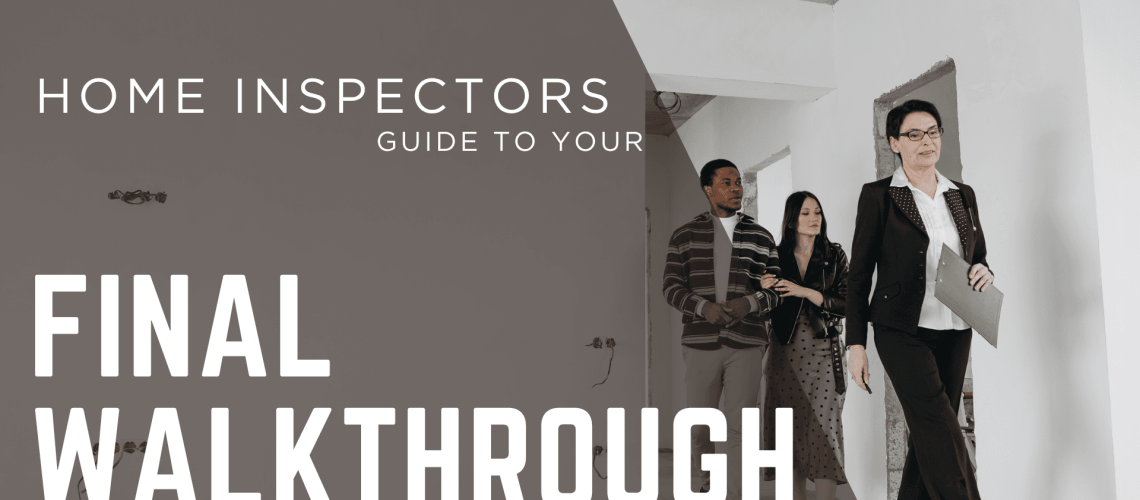When you tour a home for the first time, it’s easy to be distracted by surface details — fresh paint, new flooring, nice fixtures. But underneath those cosmetic upgrades can hide problems that don’t show themselves until after the purchase. In Ripley, Tennessee, where many homes blend older construction with newer renovations, I routinely find interior issues that buyers simply couldn’t have noticed during a quick walkthrough.
A home inspection looks beyond appearances to reveal how the house actually performs: how it manages moisture, handles temperature changes, and ages under daily use. Here are some of the most common interior defects I encounter in Ripley homes — and why each one matters more than it might seem.
Cracked or Uneven Floors
Floor cracks and uneven surfaces are often dismissed as “just old house character,” but they can signal something more significant. In parts of Ripley where the clay soil expands and contracts with moisture, even small shifts in the foundation can telegraph upward into the flooring.
Tile or vinyl planks may separate or lift slightly, creating subtle ridges that reveal movement beneath. I’ve also seen homes where flooring was laid directly over damaged subflooring, hiding softness or rot underneath. These issues aren’t always structural disasters, but they can worsen over time if water intrusion or settlement continues unchecked.
Stains and Discoloration on Walls or Ceilings
Fresh paint can cover a lot of history. During inspections, I use lighting and moisture meters to detect past or active leaks that may have been painted over. Water stains are particularly common around bathroom ceilings, window corners, and beneath HVAC supply vents.
In Ripley’s humid climate, condensation can form quickly on poorly insulated surfaces, especially where air leaks from ducts or unsealed attic spaces. Even small moisture spots can eventually lead to mold growth behind drywall if not corrected. A detailed inspection report documents these areas clearly so buyers can request further evaluation before closing.
Poorly Installed Trim and Finishes
When I see wavy baseboards, uneven crown molding, or misaligned door frames, it often tells me more about the workmanship behind the renovation than the trim itself. Quick “flip” renovations sometimes cut corners to create visual appeal without addressing underlying problems like warped studs or settling.
Uneven gaps at window casings or doors that won’t latch properly can also point to foundation movement or humidity-related expansion. These are small details, but collectively they reveal how carefully (or carelessly) a home has been maintained or remodeled.
Moisture and Ventilation Issues in Bathrooms
Bathrooms are one of the hardest-working rooms in any home — and one of the easiest places for hidden damage to develop. In Ripley, I frequently find exhaust fans that vent into the attic instead of outdoors, which traps warm, moist air where it doesn’t belong. Over time, this can cause wood decay, insulation saturation, and mold growth in the attic framing.
Tile grout lines and caulking around tubs and showers are another weak spot. Cracks or missing sealant allow water to seep behind surfaces, leading to hidden rot in wall cavities. These are inexpensive to fix early but costly to ignore later.
Damaged or Settled Drywall
Drywall cracking isn’t unusual, but the pattern and placement can tell a lot. Straight vertical cracks near corners might just reflect normal settling; diagonal cracks extending from door frames, on the other hand, may indicate structural movement.
In Ripley’s older brick homes, temperature and humidity fluctuations can also cause drywall seams to separate slightly. While not always serious, consistent cracking in the same area should be evaluated further — especially if it’s accompanied by floor slope or sticky doors.
Windows That Don’t Operate Smoothly
Sticky, painted-shut, or fogged-up windows are extremely common, even in recently remodeled houses. Double-pane glass can lose its seal over time, allowing condensation to appear between panes. This not only affects clarity but also indicates lost insulation value.
Windows that don’t open or close properly can also pose safety risks. During inspections, I check that at least one window in each sleeping room opens freely for egress. In homes where new siding or trim has been added, windows are sometimes installed or recaulked so tightly they can’t be opened at all.
Attic Access and Insulation Gaps
Although not technically a “room,” the attic is an integral part of the home’s interior environment. In Ripley homes, I often find attic hatches that are poorly sealed or lack insulation, creating a chimney effect where conditioned air escapes into the attic year-round.
That small gap can raise energy bills and make heating or cooling inconsistent. Missing insulation around recessed lights and duct penetrations adds to the problem. Properly air-sealing and insulating the attic is one of the easiest upgrades homeowners can make for immediate comfort and efficiency.
Cosmetic Cover-Ups Hiding Bigger Problems
It’s not unusual to find fresh paint or new flooring installed right before listing a home. Sometimes it’s purely aesthetic, but occasionally it’s an attempt to hide water damage, pet stains, or subfloor issues. A trained inspector knows how to read these signs — soft spots near exterior walls, bubbling in laminate floors, or baseboard swelling from past leaks.
The goal isn’t to alarm buyers, but to uncover what’s really going on so you can make informed decisions. Even if the problem turns out minor, it’s far better to know before you move in.
Why a Professional Eye Makes the Difference
Interior defects are often subtle — the kind of details only experience reveals. As an inspector, I’m not just looking for things that are broken, but for patterns that tell a larger story about how the home was built, used, and maintained.
A professional inspection in Ripley gives you more than a checklist. It provides the context and clarity you need to decide whether issues are cosmetic, manageable, or in need of immediate attention.
📞 Schedule Your Ripley Home Inspection Today
Serving Ripley, Brownsville, Covington, and communities across West Tennessee, Upchurch Inspection provides certified home inspections, detailed interior evaluations, and specialized testing for mold, radon, water quality, and more.
📞 Call (901) 350-8885 or schedule your inspection with Upchurch Inspection. today.


